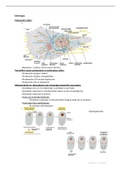Exam (elaborations)
A-Level Computer Science - AQA 2023 Flashcard
- Course
- Institution
A-Level Computer Science - AQA 2023 Flashcard Laser Printer - -answer-A type of printer that uses electrical charges to create an image on paper. The printer drum and the toner are negatively charged, and the charge on the drum is neutralised in certain areas with a laser, making the toner s...
[Show more]




